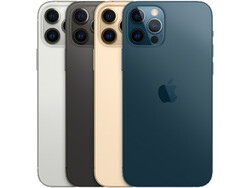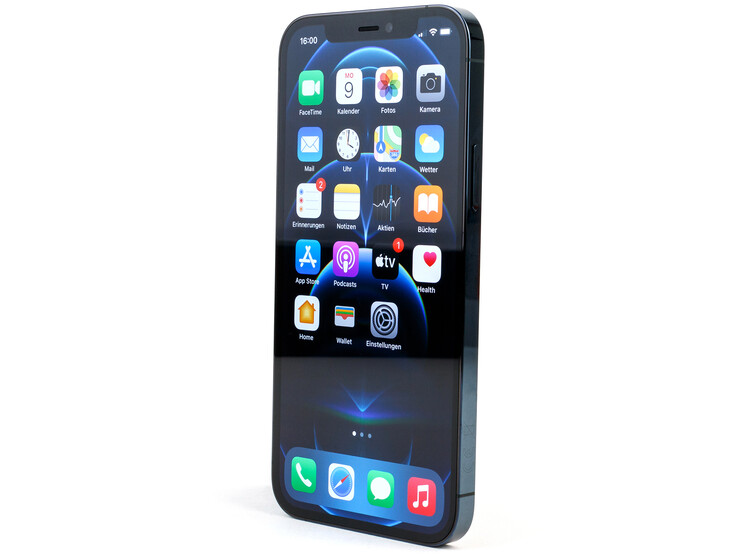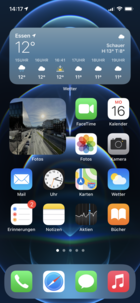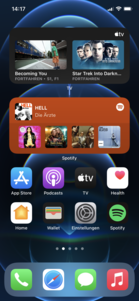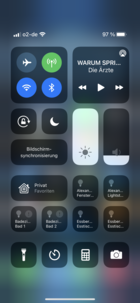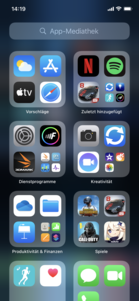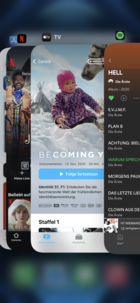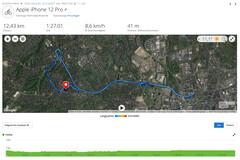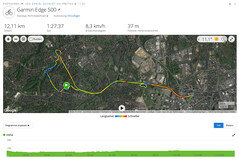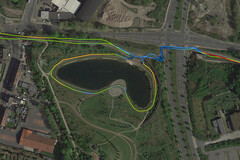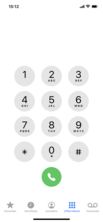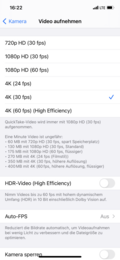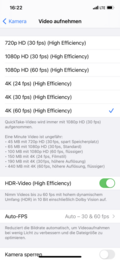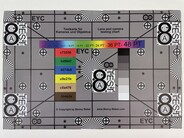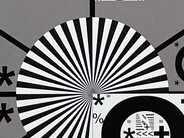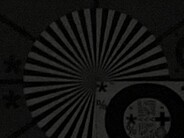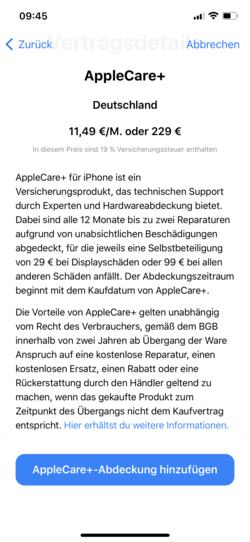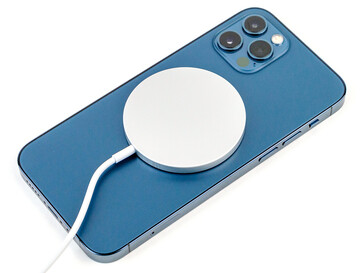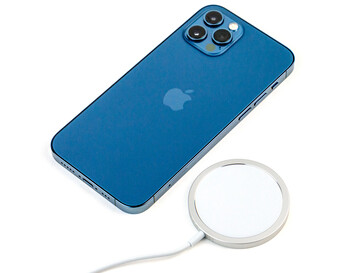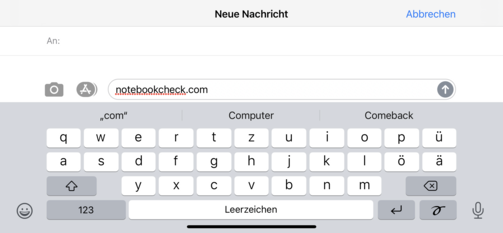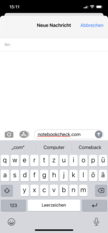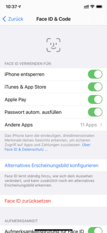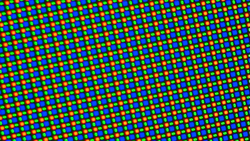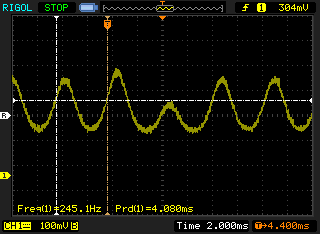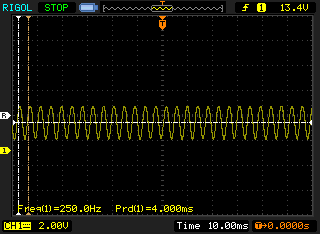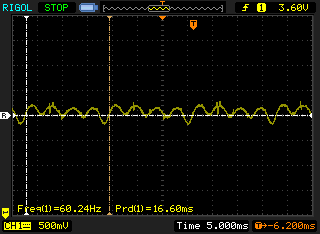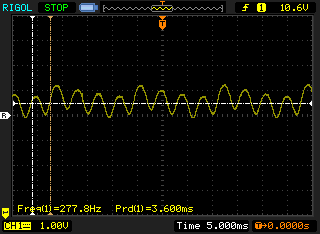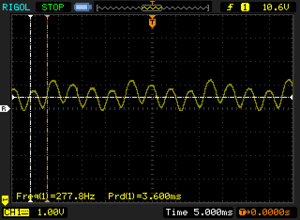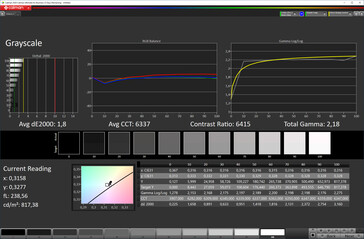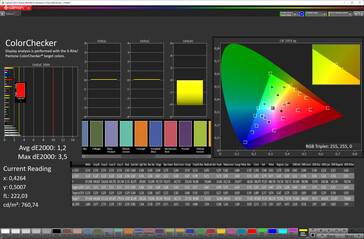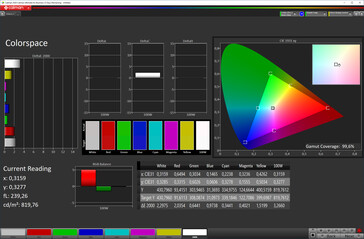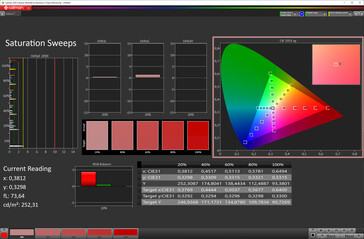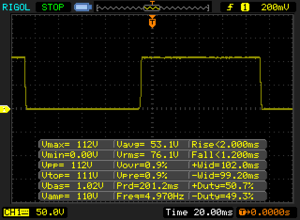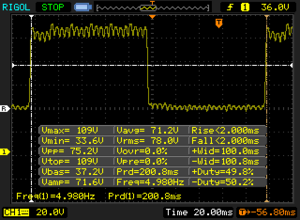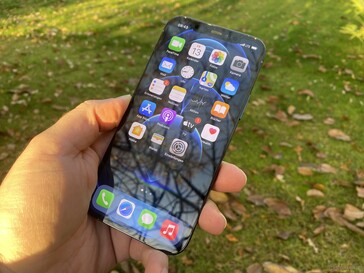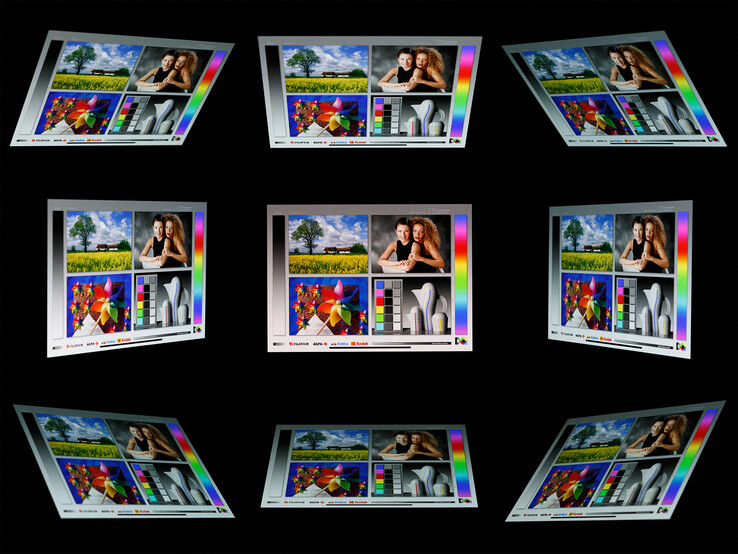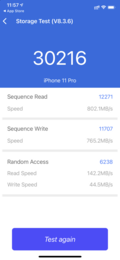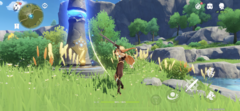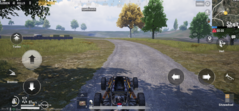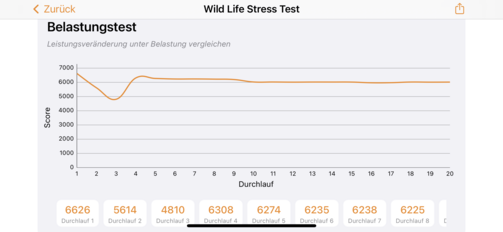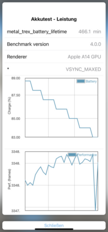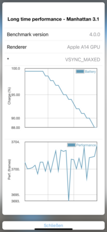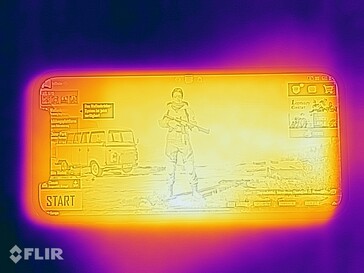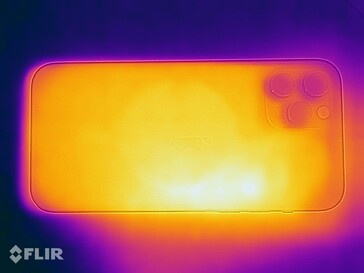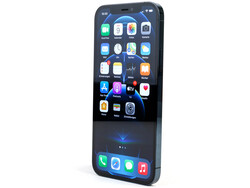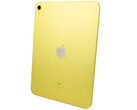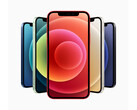Apple iPhone 12 Pro Review - Powerful Smartphone with Retro Styling
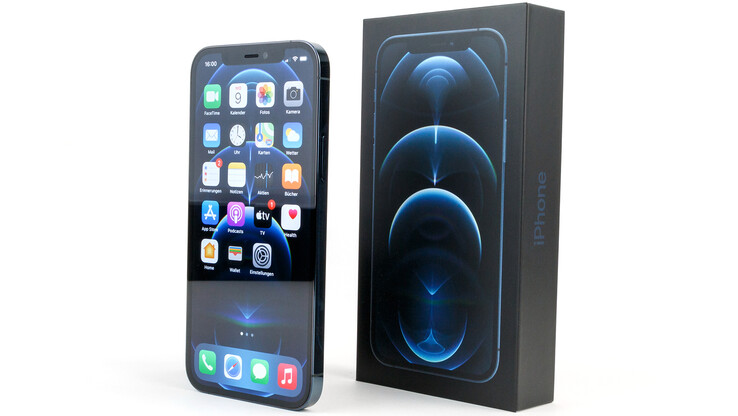
The iPhone 12 Pro received a design refresh and is now edgier than before. The new design language is reminiscent of the iPhone 4 and 5 models of yore. Apple’s smartphone is one of the first devices to be equipped with an SoC manufactured in a 5 nm process, Apple’s A14 Bionic. The triple-camera system now features an additional LiDAR sensor, and MagSafe supports attaching compatible cases and chargers magnetically. Generally speaking, Apple put in quite some fine-tuning efforts into this device.
The choice of models remained largely unchanged. The Pro is available in three storage tiers with the smallest 128 GB SKU starting at $999. The iPhone 11 Pro cost the same with just 64 GB of RAM. Other SKUs include one with 256 GB (+ $100) and one with 512 GB (+ $300). The two higher-tier storage models are $50 cheaper than before.
In addition to the 12 Pro Apple also released a new 12 Pro Max with not just a larger display and a larger battery but for the first time also an improved camera array over the 12 Pro. In return, the practically identically sized iPhone 12 is equipped with less storage, a worse camera, and smaller battery but is also significantly cheaper with prices starting at just $799. For the first time ever, Apple is also selling an iPhone mini with a particularly compact design starting at just $699.
Find out what other details Apple improved over the last generation and how the iPhone performs against its Android competition in our review.
Test Group
Rating | Date | Model | Weight | Drive | Size | Resolution | Price |
|---|---|---|---|---|---|---|---|
| 89.8 % v7 (old) | 11 / 2020 | Apple iPhone 12 Pro A14, A14 Bionic GPU | 189 g | 256 GB NVMe | 6.10" | 2532x1170 | |
| 87.8 % v7 (old) | 09 / 2019 | Apple iPhone 11 Pro A13 Bionic, A13 Bionic GPU | 188 g | 256 GB NVMe | 5.80" | 2436x1125 | |
| 89.4 % v7 (old) | 04 / 2020 | Huawei P40 Pro Kirin 990 5G, Mali-G76 MP16 | 209 g | 256 GB UFS 3.0 Flash | 6.58" | 2640x1200 | |
| 87.8 % v7 (old) | 10 / 2020 | OnePlus 8T SD 865, Adreno 650 | 188 g | 128 GB UFS 3.1 Flash | 6.55" | 2400x1080 | |
| 89.6 % v7 (old) | 02 / 2021 | Samsung Galaxy Note20 Ultra Exynos 990, Mali-G77 MP11 | 208 g | 256 GB UFS 3.1 Flash | 6.90" | 3088x1440 | |
| 88.2 % v7 (old) | 04 / 2020 | Xiaomi Mi 10 Pro SD 865, Adreno 650 | 208 g | 256 GB UFS 3.0 Flash | 6.67" | 2340x1080 |
Case – Stainless Steel and Glass for the iPhone Pro
At the front, the iPhone 12 Pro is protected by a so-called ceramic shield, which is supposed to be the most resistant display glass ever put on a smartphone. At the rear we find the same matte-finish glass as we did last year with a stainless-steel frame in-between polished to perfection. According to some reviewers the frame is supposed to be fairly susceptible to scratches, which we can neither confirm nor refute since our review unit was installed in a protective case most of the time. That said, we do not expect an increased number of scratches during regular every use even though we have to admit that scratches are more visible on polished surfaces.
The iPhone’s display grew slightly in size but the device itself got even smaller. The rear-facing camera setup protrudes by around 1.75 mm causing a fair amount of wobble when placed face-up on a flat surface such as a table. This can be all but alleviated with an optional protective case. The rear side turned out to be very pleasant to the touch with a nice and grippy frame that acted as a superb fingerprint magnet. The markings on the frame are aesthetically pleasing.
Overall build quality is excellent. Gaps are narrow and consistent, and we were not able to warp or depress the device at all. In addition, the iPhone 12 Pro is IP68-certified against ingress of dust and water for up to 30 minutes at a depth of 20 ft, representing an increase of almost 7 ft over the previous generation iPhone 11 Pro. Nevertheless, the limited time frame for submersion in water remains part of the IP68 certification.
The SIM tray takes a single nano SIM card and like before it is made of metal. Its outside face plate differs ever so slightly from the rest of the frame. Color options for the iPhone 12 Pro include Silver, Graphite, Gold, and Pacific Blue.
Connectivity – MagSafe Yay, USB Nay
As before the iPhone 12 Pro features Apple’s proprietary Lightning connector. Its versatility helps to alleviate this downside; however, it continues to suffer from very slow data transfer speeds when connected to a computer, which can be annoying to say the least.
Wireless near-field communications include Bluetooth 5.0 and NFC for Apple Pay. We would not have minded a newer version of Bluetooth although we do not expect any issues during everyday use. NFC remains limited to read-only access.
MagSafe, on the other hand, is a brand-new feature introduced with the iPhone 12 family. Basically, it is a magnetic ring at the rear of the iPhone designed to secure wireless chargers and prevent the phone from slipping off. In addition, it can also be used as a magnetic attachment system for accessories. The MagSafe moniker was previously used on MacBooks and referred to their magnetic quick-release power connector.
Software – Now with Widgets and App Library
The iPhone 12 Pro ships with iOS 14.1 and was updated to iOS 14.2 over the course of our review. Apple smartphones are notorious for their very long software support cycles.
With iOS 14, Apple’s smartphone OS finally gained support for widgets, which are available in three different sizes and can be stacked. The App Library is a pre-sorted list of all apps installed on the phone. The latest version of iOS offers various new features on top of those, which Apple lists here.
Communication and GNSS – Wi-Fi 6, 5G, and Accurate Location Services
The Wi-Fi module installed in the iPhone 12 Pro supports Wi-Fi 6 and is thus able to utilize both 2.4 and 5 GHz bands. In theory, fast data transfer speeds should be possible thanks to MIMO antenna technology. However, the iPhone performed worse than expected when connected to our Netgear Nighthawk AX 12 reference router. When transmitting data, it was barely faster than last year’s iPhone 11 Pro with ac Wi-Fi. Range and stability were excellent. We would have wished for a slightly faster handover in Mesh networks though.
Cellular connectivity now includes 5G thanks to a dedicated but slightly aged Qualcomm Snapdragon X55 modem. Apple does not list any theoretical maximum data speeds. The modem itself should be capable of transmitting up to 7 Gb/s, optimal cellular connectivity and antenna technology provided. Unfortunately, Apple’s European customers will not be receiving the mmWave antenna that US customers get and will thus be restricted in their maximum data rates. We find this very hard to comprehend. Yes, it may be true that Europe lacks a compatible cellular infrastructure at the time being. However, compatible networks have been announced and should become available in the not-too-distant future.
As expected, the remaining cellular communication standards are up to the task of providing optimal connectivity. In addition to 2G and 3G the iPhone also supports Gigabit LTE. In all three standards the iPhone 12 Pro supports a very wide variety of bands and frequencies, and it should thus be capable of achieving optimal connectivity all over the world.
Supported GNSS services include GPS, Glonass, BeiDou, QZSS, and Galileo. Unfortunately, Apple does not specify whether or not the iPhone 12 Pro supports dual-band connectivity. In addition, the device also includes a digital compass as well as a barometer.
Our real-world experiences show a very accurate GPS track recording, and the iPhone 12 Pro turned out to be even more accurate on our usual 7.5-mile bicycle tour than the professional Garmin Edge 500 satnav we use for comparison.
Telephony and Call Quality
As before, the iPhone’s telephony app is clearly laid out, and there are no new features to be found.
Call quality was excellent with the device held up to our ear. Low frequencies were slightly underrepresented, which rendered the entire soundscape slightly unnatural. Ambient noise filtering worked pretty well overall, although very loud and low-frequency sounds remained perceptible as low background hum resulting in a slightly nasal twist on the person talking. On speakerphone, the device remained very well usable in quiet environments even at a distance. The latter resulted in minor echoing.
The iPhone 12 Pro supports Wi-Fi calling and VoLTE. In addition to the single physical nano SIM card it provides dual SIM capabilities thanks to its integrated eSIM.
Cameras – Downsized Triple-Camera System for the iPhone 12 Pro
The front-facing camera did not change noticeably. Its specs are identical to last year’s iPhone, and the only difference is that the TrueDepth camera now supports DolbyVision video recording at a frame rate limited to 30 FPS. Quality is practically identical to the iPhone 11 Pro. Selfies are natural and with decent focus, and the various portrait modes are still supported.
The rear-facing main camera array includes three 12 MP sensors and an additional LiDAR sensor. The latter will assist the autofocus in low-light situations and collect depth-of-field information for portrait mode photos. In addition, it can also be used by third-party apps to capture individual 3D objects or even entire rooms.
The wide-angle lens remains the centerpiece of the triple-camera system. According to Apple, it offers a focal length of 26 mm with 1.4 µm large pixels for good light sensitivity. A larger aperture of f/1.6 makes for an improved low-light performance. The iPhone 12 Pro Max features an even bigger sensor with 1.7 µm large pixels as well as a brand-new sensor shift optical image stabilizer. In comparison, the iPhone 12 Pro seems more like an iPhone 11 Pro dressed in new rags with an extra lens that improves sharpness around the edges of photos thrown in for good measure.
The 13-mm ultra-wide angle lens remained identical to last year’s camera but turned out to produce images with slightly sharper details along the edges. That said, we still noticed a drop in sharpness when compared to the center. The telephoto lens offers a 2x optical zoom (52 mm) and is stabilized by an OIS – same as before. The Pro Max, on the other hand, offers a 65-mm telephoto lens and thus slightly better zoom capabilities.
In everyday use the iPhone 12 Pro turned out to create well-balanced photos with a comparatively wide dynamic range thanks to its new HDR3 algorithms. It faired comparatively well in backlight shots but suffered from a slightly cool color representation in close-up photos unless shot in portrait mode. Low-light performance was improved even when without using the night mode feature. Despite the fact that the iPhone cannot capture nearly as much light as the Huawei Mate 40 Pro, low-light photos turned out very well and rich in detail.
If you want to zoom in deeper than the optical zoom is capable of image quality will suffer. We noticed a very visible drop in quality at around 5x already with a maximum zoom of just 10x. Shooting in RAW is not supported yet. However, Apple has already announced that it will bring Apple ProRAW to the iPhone with a future iOS update.
While videos are still not recorded in 8K the iPhone 12 Pro supports HDR and DolbyVision with a 10-bit color depth. Those specs may sound impressive; however, they are not necessarily immediately noticeable during everyday use, especially considering that the playback device has to support them as well. Capturing videos remains the iPhone’s masterpiece, and videos turned out great for a smartphone. Apple’s video codec of choice is a high-efficiency H.265 codec. It is mandatory for 4K@60 Hz and HDR videos and optimal for all other videos, which can alternatively be recorded in H.264 instead.
Selfies shot with the iPhone 12 Pro, from left to right: photo mode without filter, portrait modes: natural, studio, contour, stage light, stage light mono, high-key mono
Image comparison
Choose a scene and navigate within the first image. One click changes the position on touchscreens. One click on the zoomed-in image opens the original in a new window. The first image shows the scaled photograph of the test device.
Wide angleWide angleUltra wide angleZoom (5x)Low lightColors were very pronounced and strong under normalized lighting conditions, but the iPhone 12 Pro’s color representation did not deviate too far from the original. White balance was mostly natural, and skin colors showed a very minor red tint.
On our test chart, sharpness and focus were great up to the very edges. Apple thus delivered on this particular promise. Color transitions and dark fonts on dark backgrounds did not cause any issues either. Looking at the ultra-wide angle photo of our test chart we noticed that Apple applies distortion correction in order to reduce lens curvature. Unfortunately, the edges remained fairly blurry overall. The telephoto lens took photos that were sharp all over.
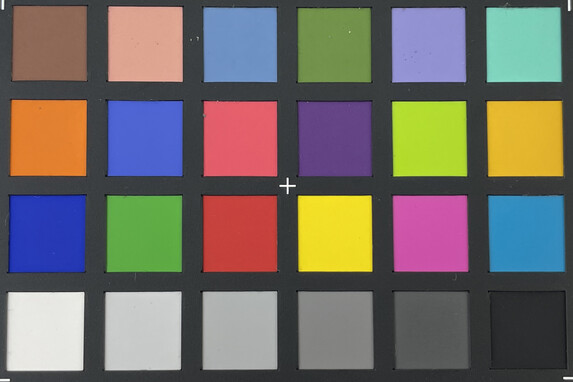
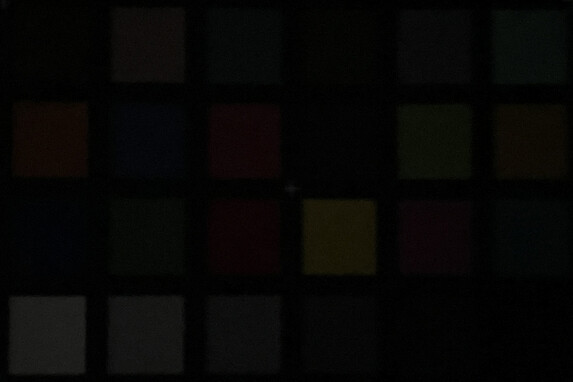
Accessories and Warranty – Reduced Scope of Delivery for the iPhone
The first thing you will notice when holding the iPhone 12 Pro’s box in the hand is its diminutive size. No surprise there, after all Apple reduced the number of accessories included significantly with this generation. The only things found in the box in addition to the phone itself and some documentation are a SIM tool as well as a USB-C to Lightning cable. Even the number of stickers was cut in half from two to one.
The official reasoning behind these measures is of an ecological nature. By reducing the number of potentially useless accessories in the box Apple is able to reduce the size of the box itself, thereby further reducing CO2 emissions for the box itself as well as for its transport. This may not be a bad idea per se, and it is not the first time we see this sort of argument flaring up. However, reality can be quite different, and for many this will be a bitter pill to swallow. First of all, you will need to provide your own USB-C power supply. Apple has only started selling those with the previous generation of iPhones. Before that, the company only sold and included its standard 5 W USB-A power supply. Thus, not many customers will be able to continue using their already existing power supplies. Second, while Apple managed to save some money by eliminating the power supply and headset from the box, the firm did not pass these savings on to the customer. Truth be told, Apple could have solved this in a more elegant manner.
Apple continues to offer a huge variety of optional accessories for the entire iPhone line-up. Many will probably opt for a USB-C power supply starting at $19 for the 20 W model that is also fully compatible with the magnetic $39 MagSafe wireless charger. Apple also integrated MagSafe into its own protective cases. As a result, they got a little bit more expensive over last year’s generation.
By default, Apple smartphones come with one year of limited warranty. In addition, you can purchase AppleCare+ within 60 days of purchase. It covers two incidents of accidental damage protection every 12 months for a fee of $99. You can either purchase two years of AppleCare+ and pay up front, which will set you back $199 for the iPhone 12 Pro, or pay a monthly fee of $9.99. The latter can be cancelled any time and can also run for much longer than just two years.
iPhone 12 Pro with MagSafe charger
Input Devices and Handling – iPhone with MagSafe and Face ID
The iPhone 12 Pro’s capacitive touch screen felt very smooth, and the transitions between the display glass and the frame were comfortably subtle. The entire display surface was very quick to react to input. Apple’s default keyboard can be replaced with third-party keyboards from the App Store.
As before, biometric authentication is provided by the built-in fast and reliable 3D face detection technology Face ID. Face ID will fail to properly recognize your face while wearing a mask, but you can always setup an alternate appearance.
The MagSafe magnets at the rear secured cases very reliably to the point where we had trouble removing them. The MagSafe charger may need to be lined up properly before the magnet snaps the charger into place. It worked reliably and fast during everyday use and added real value to the iPhone 12 line-up.
Display – iPhone 12 Pro with bright OLED
The display grew slightly to 6.1-inches now. It runs at a native resolution of 2532x1170 pixels, a resolution Apple refers to as Super Retina XDR. Its maximum brightness was increased over the iPhone 11 Pro and will now reach up to 822 nits in the center of all-white content and similar results in the APL50 test with a pattern of evenly distributed dark and bright areas or even manual brightness adjustment. We were, however, unable to verify Apple’s claims of up to 1,200 nits in our tests. In order to reach those the phone will most likely have to detect the on-screen content as HDR material. The display supports HDR10 and DolbyVision.
By default, True Tone is enabled and slightly decreases color temperature to a somewhat warmer representation. This increases even further with dimming light in order to make it easier on the eyes of its users. If you prefer not to use this feature it can be disabled in the iPhone’s settings.
Pulse Width Modulation is a topic we have already talked about previously. Like all OLED displays the iPhone 12 Pro will display the typical PWM flicker. Amplitudes differ based on display brightness. When set to minimum brightness, the frequency fluctuated between 117.9 and 245.1 Hz. Between minimum and 21% brightness the frequency remained fairly consistent at 223 to 250 Hz. Between 22% and 50% display brightness we were able to attest a frequency of 60 Hz. Above 50% it started to fluctuate again and measured between 80 and 277.8 Hz.
This comparatively stable amplitude response below 21% display brightness should cause less strain on the eyes of the user. Above 22% the iPhone goes into 60 Hz mode, a method also commonly used for DC dimming. This maximum brightness achieved in this mode is around 150 nits, which means it will be most commonly used indoors. Brightness then increases significantly, and amplitude response becomes somewhat irregular. Given that the amount of ambient light will be fairly high in these cases the strain on the eyes of the user should be fairly low as well if the ambient light sensor is used to regulate display brightness.
| |||||||||||||||||||||||||
Brightness Distribution: 99 %
Center on Battery: 822 cd/m²
Contrast: ∞:1 (Black: 0 cd/m²)
ΔE ColorChecker Calman: 1.2 | ∀{0.5-29.43 Ø4.79}
ΔE Greyscale Calman: 1.8 | ∀{0.09-98 Ø5}
99.6% sRGB (Calman 2D)
Gamma: 2.18
CCT: 6337 K
| Apple iPhone 12 Pro OLED, 2532x1170, 6.1" | Apple iPhone 11 Pro OLED, 2436x1125, 5.8" | Huawei P40 Pro OLED, 2640x1200, 6.6" | OnePlus 8T AMOLED, 2400x1080, 6.6" | Samsung Galaxy Note20 Ultra Dynamic AMOLED, 3088x1440, 6.9" | Xiaomi Mi 10 Pro Super AMOLED, 2340x1080, 6.7" | |
|---|---|---|---|---|---|---|
| Screen | 6% | -4% | 12% | -83% | 13% | |
| Brightness middle (cd/m²) | 822 | 787 -4% | 584 -29% | 743 -10% | 860 5% | 753 -8% |
| Brightness (cd/m²) | 820 | 793 -3% | 576 -30% | 734 -10% | 878 7% | 762 -7% |
| Brightness Distribution (%) | 99 | 98 -1% | 95 -4% | 91 -8% | 96 -3% | 96 -3% |
| Black Level * (cd/m²) | ||||||
| Colorchecker dE 2000 * | 1.2 | 1.2 -0% | 1.1 8% | 0.89 26% | 4.5 -275% | 0.9 25% |
| Colorchecker dE 2000 max. * | 3.5 | 2.6 26% | 2.3 34% | 1.69 52% | 10.4 -197% | 1.6 54% |
| Greyscale dE 2000 * | 1.8 | 1.5 17% | 1.8 -0% | 1.4 22% | 2.4 -33% | 1.5 17% |
| Gamma | 2.18 101% | 2.2 100% | 2.16 102% | 2.199 100% | 2 110% | 2.24 98% |
| CCT | 6337 103% | 6339 103% | 6355 102% | 6423 101% | 6466 101% | 6415 101% |
* ... smaller is better
Screen Flickering / PWM (Pulse-Width Modulation)
| Screen flickering / PWM detected | 277.8 Hz | ||
The display backlight flickers at 277.8 Hz (worst case, e.g., utilizing PWM) . The frequency of 277.8 Hz is relatively high, so most users sensitive to PWM should not notice any flickering. However, there are reports that some users are still sensitive to PWM at 500 Hz and above, so be aware. In comparison: 53 % of all tested devices do not use PWM to dim the display. If PWM was detected, an average of 8152 (minimum: 5 - maximum: 343500) Hz was measured. | |||
Due to the nature of its OLED technology the iPhone can display true blacks, which in turn results in a theoretically infinite contrast ratio.
Using a photospectrometer in combination with the CalMAN software we were able to take a closer look at the iPhone’s color accuracy and representation. Naturally, we ran these tests with True Tone disabled. The results were fairly natural colors with only minor color deviations that were all but imperceptible to the naked eye. To our surprise the overall quality was slightly worse than on the iPhone 12 given that the latter’s DeltaE deviations were even lower. Whether this is a compromise necessitated by the brighter display or simply based on manufacturing variances we cannot say.
With True Tone enabled colors shifted to the warmer side of the spectrum. In theory, the iPhone 12 Pro should support the wider DCI-P3 color space. However, we were unable to verify this during our tests.
Display Response Times
| ↔ Response Time Black to White | ||
|---|---|---|
| 3.2 ms ... rise ↗ and fall ↘ combined | ↗ 2 ms rise | |
| ↘ 1.2 ms fall | ||
| The screen shows very fast response rates in our tests and should be very well suited for fast-paced gaming. In comparison, all tested devices range from 0.1 (minimum) to 240 (maximum) ms. » 13 % of all devices are better. This means that the measured response time is better than the average of all tested devices (20.3 ms). | ||
| ↔ Response Time 50% Grey to 80% Grey | ||
| 4 ms ... rise ↗ and fall ↘ combined | ↗ 2 ms rise | |
| ↘ 2 ms fall | ||
| The screen shows very fast response rates in our tests and should be very well suited for fast-paced gaming. In comparison, all tested devices range from 0.165 (minimum) to 636 (maximum) ms. » 14 % of all devices are better. This means that the measured response time is better than the average of all tested devices (31.7 ms). | ||
Outdoor usability did not suffer from any restrictions whatsoever. Thanks to its high maximum display brightness the iPhone 12 Pro should remain usable even in bright sunlight. Previous generations tended to dim the display significantly after a short while if ambient temperatures were too high. Our final verdict on whether or not the iPhone 12 Pro will do the same will have to wait until summer.
The Apple iPhone 12 Pro outdoors on a clear autumn day.
Performance – Apple A14 Bionic for Higher Efficiency and Improved Machine Learning
Like all other iPhone 12 models the 12 Pro is powered by Apple’s A14 Bionic. The major difference is that in the Pro line it has access to 6 GB instead of 4 GB of RAM. The A14 is the first SoC manufactured in a 5 nm process and features two performance cores and four efficiency cores. See this performance comparison between various Apple products with this new SoC for more details.
Our benchmarks showed that the iPhone 12 Pro continues to feature the most powerful smartphone SoC currently available. Compared to previous generations, its largest leap is not in CPU or GPU performance but machine learning instead, thanks to its 16-core neural engine.
Memory performance has also improved dramatically. According to AnTuTu, the new SoC is up to 80% faster than its predecessor.
| AnTuTu v8 - Total Score (sort by value) | |
| Apple iPhone 12 Pro | |
| Apple iPhone 11 Pro | |
| Huawei P40 Pro | |
| OnePlus 8T | |
| Samsung Galaxy Note20 Ultra | |
| Xiaomi Mi 10 Pro | |
| Average Apple A14 Bionic (510245 - 647374, n=5) | |
| AImark - Score v2.x (sort by value) | |
| Apple iPhone 12 Pro | |
| Apple iPhone 11 Pro | |
| Huawei P40 Pro | |
| Average Apple A14 Bionic (91892 - 92916, n=4) | |
When it comes to browsing the web, Apple remains the Gold standard and practically wipes the floor with its competitors.
| Jetstream 2 - 2.0 Total Score | |
| Average Apple A14 Bionic (158.2 - 178.9, n=6) | |
| Apple iPhone 12 Pro (Safari Mobile 14) | |
| Average of class Smartphone (23.8 - 387, n=156, last 2 years) | |
| Apple iPhone 11 Pro (Safari Mobile 13.0) | |
| Huawei P40 Pro (Huawei Browser 10.1) | |
| OnePlus 8T (Chrome 86) | |
| Xiaomi Mi 10 Pro (Chrome 81) | |
| Samsung Galaxy Note20 Ultra (Chrome 84) | |
| JetStream 1.1 - Total Score | |
| Average Apple A14 Bionic (305 - 376, n=5) | |
| Apple iPhone 12 Pro (Safari Mobile 14) | |
| Apple iPhone 11 Pro (Safari Mobile 13.0) | |
| OnePlus 8T (Chrome 86) | |
| Huawei P40 Pro (Huawei Browser 10.1) | |
| Xiaomi Mi 10 Pro (Chrome 81) | |
| Samsung Galaxy Note20 Ultra (Chrome 84) | |
| Speedometer 2.0 - Result 2.0 | |
| Average of class Smartphone (15.2 - 643, n=132, last 2 years) | |
| Average Apple A14 Bionic (188 - 272, n=6) | |
| Apple iPhone 12 Pro (Safari Mobile 14) | |
| Apple iPhone 11 Pro (Safari Mobile 13.0) | |
| Huawei P40 Pro (Huawei Browser 10.1) | |
| OnePlus 8T (Chome 86) | |
| Xiaomi Mi 10 Pro (Chrome 81) | |
| WebXPRT 3 - Overall | |
| Average Apple A14 Bionic (191 - 214, n=6) | |
| Apple iPhone 12 Pro (Safari Mobile 14) | |
| Apple iPhone 11 Pro (Safari Mobile 13.0) | |
| Average of class Smartphone (38 - 380, n=41, last 2 years) | |
| OnePlus 8T (Chrome 86) | |
| Samsung Galaxy Note20 Ultra (Chrome 84) | |
| Xiaomi Mi 10 Pro (Chrome 81) | |
| Huawei P40 Pro | |
| Octane V2 - Total Score | |
| Apple iPhone 12 Pro (Safari Mobile 14) | |
| Average Apple A14 Bionic (55710 - 59963, n=6) | |
| Apple iPhone 11 Pro (Safari Mobile 13.0) | |
| Average of class Smartphone (2228 - 121337, n=202, last 2 years) | |
| Huawei P40 Pro (Huawei Browser 10.1) | |
| Xiaomi Mi 10 Pro (Chrome 81) | |
| OnePlus 8T (Chrome 86) | |
| Samsung Galaxy Note20 Ultra (Chrome 84) | |
| Mozilla Kraken 1.1 - Total | |
| Samsung Galaxy Note20 Ultra (Chrome 84) | |
| Xiaomi Mi 10 Pro (Chrome 81) | |
| Huawei P40 Pro (Huawei Browser 10.1) | |
| OnePlus 8T (Chrome 86) | |
| Average of class Smartphone (257 - 28190, n=157, last 2 years) | |
| Apple iPhone 11 Pro (Safari Mobile 13.0) | |
| Average Apple A14 Bionic (460 - 547, n=6) | |
| Apple iPhone 12 Pro (Safari Mobile 14) | |
* ... smaller is better
Gaming – Great Gaming Performance but the Notch is in the Way
Unfortunately, GameBench was not yet fully compatible with iOS 14.2 at the time of testing, which is why we were unable to run any game benchmarks. We will make sure to run them and report those numbers back as soon as possible.
Subjectively, the iPhone 12 Pro ran games smoothly at high FPS, even demanding ones, in high details. While the integrated speakers will be fine for casual games, we would most certainly suggest using headphones for intense and immersive gaming sessions.
The notch turned out to be in the way occasionally, especially when games weren’t optimized appropriately. For example, PUBG displayed various on-screen buttons right behind the notch. In addition, the rounded display corners resulted in some loss of display content.
Emissions – The Sound is Lacking
Temperature
Surface temperatures remained very low when idle. Under load, they increased significantly but never to the point where the iPhone 12 Pro got more than lukewarm.
We use GFXBench’s battery test that runs its integrated benchmarks 30x in a row while recording battery charge levels and frame rates in order to determine how well a smartphone SoC handles sustained load and the potentially high temperatures resulting therefrom. In the older T-Rex benchmark the iPhone 12 Pro did not show any performance degradation whatsoever, and the newer Manhattan test showed only minor fluctuations. However, the newer 3DMark Wild Life stress test is what ultimately brought the iPhone 12 Pro to its knees. After a flying start, performance dropped significantly for a short period of time only to rise up again to a level that was lower than before.
| 3DMark - Wild Life Stress Test Stability | |
| Huawei P40 Pro | |
| Google Pixel 5 | |
| Samsung Galaxy S20 FE 5G | |
| Apple iPhone 12 Pro | |
| Apple iPhone 11 Pro | |
| Samsung Galaxy Note20 Ultra | |
(+) The maximum temperature on the upper side is 34.2 °C / 94 F, compared to the average of 35.2 °C / 95 F, ranging from 21.9 to 247 °C for the class Smartphone.
(+) The bottom heats up to a maximum of 33.5 °C / 92 F, compared to the average of 34 °C / 93 F
(+) In idle usage, the average temperature for the upper side is 27.3 °C / 81 F, compared to the device average of 32.9 °C / 91 F.
Speakers
The iPhone 12 Pro features two speakers for media consumption, the earphone itself and one extra speaker at the bottom. The speakers can get very loud and showed a fairly balanced soundscape on medium volume. However, mids were rather thin, resulting in lack of depth and prowess. Some of the iPhone’s competitors did much better in this regard.
You can connect Bluetooth headphones for an improved audio experience. However, the only audio codecs supported by Apple are SBC and AAC with no High-Res Audio codec in sight. This is perfectly fine for Apple Music or Spotify but certainly not for listening to lossless audio on Tidal or Qobuz, which will require wired headphones. Considering that high-quality headphones capable of high-resolution audio playback with a Lightning connector are few and far between you will also need to invest in a separate dongle.
Apple iPhone 12 Pro audio analysis
(+) | speakers can play relatively loud (92.3 dB)
Bass 100 - 315 Hz
(-) | nearly no bass - on average 19.7% lower than median
(+) | bass is linear (6.1% delta to prev. frequency)
Mids 400 - 2000 Hz
(±) | reduced mids - on average 6.8% lower than median
(+) | mids are linear (5.3% delta to prev. frequency)
Highs 2 - 16 kHz
(±) | higher highs - on average 9.7% higher than median
(+) | highs are linear (2.7% delta to prev. frequency)
Overall 100 - 16.000 Hz
(±) | linearity of overall sound is average (19.2% difference to median)
Compared to same class
» 24% of all tested devices in this class were better, 9% similar, 67% worse
» The best had a delta of 11%, average was 35%, worst was 134%
Compared to all devices tested
» 45% of all tested devices were better, 7% similar, 48% worse
» The best had a delta of 4%, average was 24%, worst was 134%
Samsung Galaxy Note20 Ultra audio analysis
(+) | speakers can play relatively loud (88.8 dB)
Bass 100 - 315 Hz
(-) | nearly no bass - on average 22.2% lower than median
(±) | linearity of bass is average (10.7% delta to prev. frequency)
Mids 400 - 2000 Hz
(+) | balanced mids - only 4.5% away from median
(+) | mids are linear (3% delta to prev. frequency)
Highs 2 - 16 kHz
(+) | balanced highs - only 3.1% away from median
(+) | highs are linear (1.7% delta to prev. frequency)
Overall 100 - 16.000 Hz
(+) | overall sound is linear (14.7% difference to median)
Compared to same class
» 1% of all tested devices in this class were better, 2% similar, 96% worse
» The best had a delta of 11%, average was 35%, worst was 134%
Compared to all devices tested
» 18% of all tested devices were better, 4% similar, 77% worse
» The best had a delta of 4%, average was 24%, worst was 134%
Battery Life – Small Battery, Great Stamina
Power Consumption
Compared to last year’s iPhone 11 Pro Apple improved power consumption on the iPhone 12 Pro to make it much more efficient.
The device can be charged via cable, wirelessly with up to 7.5 W, or via MagSafe with up to 15 W.
| Off / Standby | |
| Idle | |
| Load |
|
Key:
min: | |
| Apple iPhone 12 Pro 2815 mAh | Apple iPhone 11 Pro 3046 mAh | Huawei P40 Pro 4200 mAh | OnePlus 8T 4500 mAh | Samsung Galaxy Note20 Ultra 4500 mAh | Xiaomi Mi 10 Pro 4500 mAh | Average Apple A14 Bionic | Average of class Smartphone | |
|---|---|---|---|---|---|---|---|---|
| Power Consumption | -32% | -31% | -65% | -48% | -30% | -121% | -81% | |
| Idle Minimum * (Watt) | 0.64 | 0.58 9% | 0.92 -44% | 1.1 -72% | 0.65 -2% | 0.61 5% | 0.933 ? -46% | 0.853 ? -33% |
| Idle Average * (Watt) | 1.22 | 1.99 -63% | 1.41 -16% | 1.5 -23% | 1.06 13% | 1.19 2% | 3.51 ? -188% | 1.43 ? -17% |
| Idle Maximum * (Watt) | 1.24 | 2.03 -64% | 1.47 -19% | 1.7 -37% | 1.49 -20% | 1.23 1% | 3.66 ? -195% | 1.609 ? -30% |
| Load Average * (Watt) | 3.04 | 3.13 -3% | 3.35 -10% | 4.6 -51% | 4.91 -62% | 4.18 -38% | 5.4 ? -78% | 7.09 ? -133% |
| Load Maximum * (Watt) | 3.86 | 5.43 -41% | 6.37 -65% | 9.4 -144% | 10.29 -167% | 8.53 -121% | 7.57 ? -96% | 11.2 ? -190% |
* ... smaller is better
Battery Life
The battery decreased in size by 8% over last year. Battery life, however, remained nearly identical and continues to outshine competitors with significantly larger batteries, such as the Huawei P40 Pro or OnePlus 8T.
The best comparison between the various contenders can be achieved by normalizing display brightness to 150 nits. In this test, the iPhone landed somewhere in the middle surrounded by its competitors. Nevertheless, overall battery life was good, and the phone should easily last you all day long.
| Apple iPhone 12 Pro 2815 mAh | Apple iPhone 11 Pro 3046 mAh | Huawei P40 Pro 4200 mAh | OnePlus 8T 4500 mAh | Samsung Galaxy Note20 Ultra 4500 mAh | Xiaomi Mi 10 Pro 4500 mAh | |
|---|---|---|---|---|---|---|
| Battery runtime | 1% | -18% | -8% | -16% | -9% | |
| Reader / Idle (h) | 34.9 | 34.7 -1% | 24.6 -30% | 25.7 -26% | 20.4 -42% | 35.6 2% |
| H.264 (h) | 18.6 | 17.4 -6% | 19 2% | 18.4 -1% | 16.6 -11% | 16.2 -13% |
| WiFi v1.3 (h) | 13 | 13.2 2% | 12.4 -5% | 17.1 32% | 10.7 -18% | 14.4 11% |
| Load (h) | 5.2 | 5.6 8% | 3.3 -37% | 3.4 -35% | 5.6 8% | 3.3 -37% |
Pros
Cons
Verdict – Retro Diva Eyeing the Future
The Apple iPhone 12 Pro’s new design language is reminiscent of the iPhone 4 and 5 series of yore, and it will certainly excite some fans. It is, after all, a very good-looking smartphone. Thanks to its improved display-to-body ratio the phone only had to grow marginally to house the larger 6.1-inch display, and it thus remains comparatively compact.
Thanks to its architecture, Apple’s new SoC is a huge step forward. Not only is it more efficient than before, it also offers a higher performance, particularly for machine learning. The camera was improved even further even though the more light-sensitive sensor is only available in the Pro Max model.
The iPhone 12 Pro performed very well in most aspects, and it is a true premium product with a well-established and matured eco system.
Apple’s take on accessories makes sense and is a great step towards a more sustainable future. However, Apple failed to communicate this step appropriately, and the fact that you may need to purchase optional accessories remains a bitter pill to swallow.
The new MagSafe technology has a huge variety of use cases, and we can already see third-party manufacturers using it and creating their own exciting accessories. 5G integration was long overdue; however, the omission of mmWave in some markets is utterly absurd.
Audio performance is another area that Apple needs to improve upon, particularly the lack of High-Res Audio support over Bluetooth that is unworthy of a true high-end smartphone.
Apple iPhone 12 Pro
- 08/31/2022 v7 (old)
Daniel Schmidt




